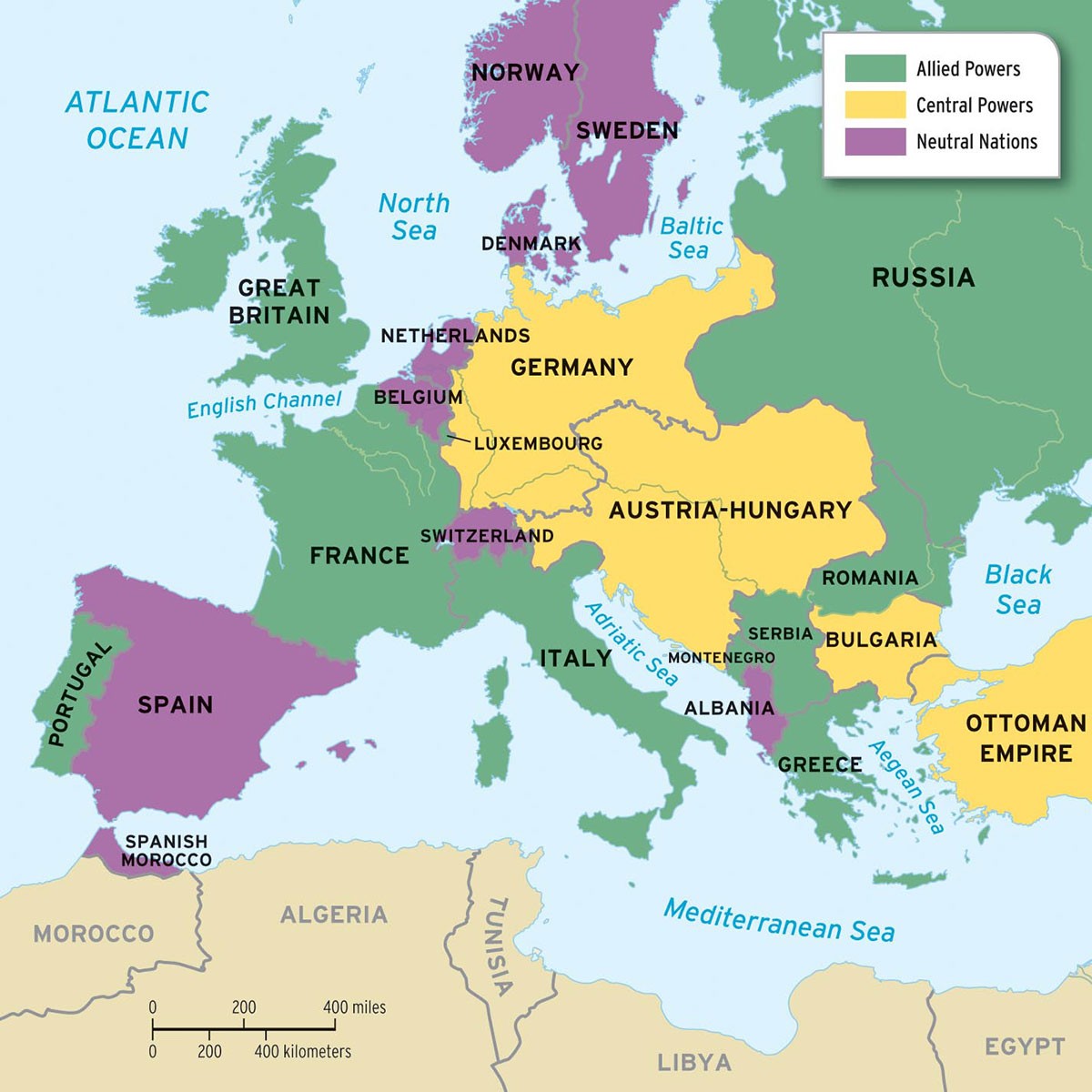At the dawn of the 20th century, the world stood unknowingly on the brink of a conflict that would reshape nations and redefine warfare. While few in 1914 anticipated a global war, the assassination of Austrian Archduke Franz Ferdinand and his wife, Sophie, on June 28th of that year acted as the spark that ignited the powder keg of pre-existing European tensions, plunging the world into what became known as World War I. But why did WWI begin with this single act of violence? The answer lies in a complex web of political, social, and military factors that had been decades in the making.
The assassination, which occurred in Sarajevo, Bosnia, a region under Austro-Hungarian rule resented by many Bosnians and their Serbian neighbors, provided Austria-Hungary with the pretext it needed to act against Serbia. However, the assassination was merely the catalyst. To truly understand why World War 1 started, we must delve into the deeper, underlying causes that transformed a regional crisis into a global conflagration. These key factors included militarism, alliances, imperialism, and nationalism – often remembered by the acronym MAIN.
Militarism, the belief in the power of military strength and the glorification of war, had become deeply entrenched in European society. An arms race was in full swing, particularly between Great Britain and Germany, as each nation sought to build the most powerful navy and army. Military plans, like the German Schlieffen Plan, designed for a swift victory against France, further exacerbated tensions and created a rigid framework that made diplomatic solutions difficult once war seemed imminent. This pervasive militaristic culture created an environment where war was seen as not only inevitable by some, but even desirable.
The intricate system of alliances was another critical element in why World War One erupted. Europe was divided into two major blocs: the Central Powers, initially consisting of Germany and Austria-Hungary, and the Allies, which began with France, Great Britain, and Russia. These alliances, intended to maintain peace through a balance of power, ironically ensured that a localized conflict could quickly escalate. When Austria-Hungary declared war on Serbia, based on the perceived Serbian government involvement in the assassination (though the extent is still debated by historians), the alliance system dragged nation after nation into the conflict. Russia, bound by treaty to Serbia, mobilized its army in support. Germany, allied with Austria-Hungary, then declared war on Russia and France. Germany’s invasion of neutral Belgium to attack France then brought Great Britain into the war, committed to defending Belgian neutrality.
Imperialism, the competition for colonies and resources, also fueled the flames of war. European powers were engaged in a scramble for territories in Africa and Asia, leading to frequent clashes and rivalries. Germany, a relatively latecomer to the imperial game, felt constrained by the existing colonial powers and sought to expand its global influence, often at the expense of others. This imperial competition created friction and mistrust among the major European powers.
Nationalism, a strong sense of pride and loyalty to one’s nation, was another potent force. In some cases, it manifested as a desire for national unity, as seen in Germany and Italy in the preceding decades. However, in the early 20th century, nationalism also took the form of intense rivalry and hostility between nations. Furthermore, within the Austro-Hungarian Empire, various ethnic groups, fueled by nationalist aspirations, sought independence, destabilizing the region and contributing to the tensions that led to war. Pan-Slavism, a movement advocating for the unity of Slavic peoples, particularly in the Balkans, further inflamed tensions between Austria-Hungary and Serbia, as Austria-Hungary feared Serbian ambitions to unite Slavic populations within its empire.
The initial phase of World War I was characterized by rapid offensives, but soon, on the Western Front, the war devolved into trench warfare. This brutal and static form of combat dominated the battlefields of France and Belgium for much of the war. Trenches, complex networks of ditches, provided soldiers with some protection from enemy fire, but also led to horrific living conditions and prolonged the conflict. “No Man’s Land,” the deadly zone between opposing trenches, became a symbol of the war’s devastating stalemate.
Within the trenches, soldiers faced constant danger not only from enemy attacks but also from disease. Unsanitary conditions led to widespread outbreaks of dysentery, typhus, and cholera. Specific ailments like trench foot, caused by prolonged exposure to damp and cold, and trench mouth, a bacterial infection exacerbated by poor hygiene and stress, became notorious aspects of trench life.
World War I also witnessed the introduction of new and terrifying weapons. Poison gas, tanks, and airplanes fundamentally changed the nature of warfare. Poison gas, first deployed by the Germans, caused horrific injuries and psychological trauma, leading to the development of gas masks. Tanks, though initially unreliable, offered a means to cross barbed wire and navigate the treacherous terrain of the battlefield. Airplanes, initially used for reconnaissance, quickly evolved into offensive weapons, leading to aerial combat and bombing raids.
In conclusion, World War 1’s beginning was not a singular event, but rather the culmination of decades of escalating tensions. While the assassination of Archduke Franz Ferdinand provided the immediate trigger, the underlying causes – militarism, alliances, imperialism, and nationalism – created a volatile and dangerous environment in Europe. These intertwined factors, combined with diplomatic failures and rigid military plans, ultimately propelled the world into a devastating global conflict, forever altering the course of history.
Suggested Reading
**Russell Freedman**The War to End All Wars: World War INew York: Clarion Books, 2010.
**Evelyn M. Monahan & Rosemary Neidel-Greenlee**A Few Good WomenNew York: Alfred A. Knopf, 2010.
**Robert H. Zieger**America’s Great War: World War I and the American ExperienceLanham, MD: Rowman & Littlefield, 2000.
Related Topics: Exhibit, World War I, WWI
[
